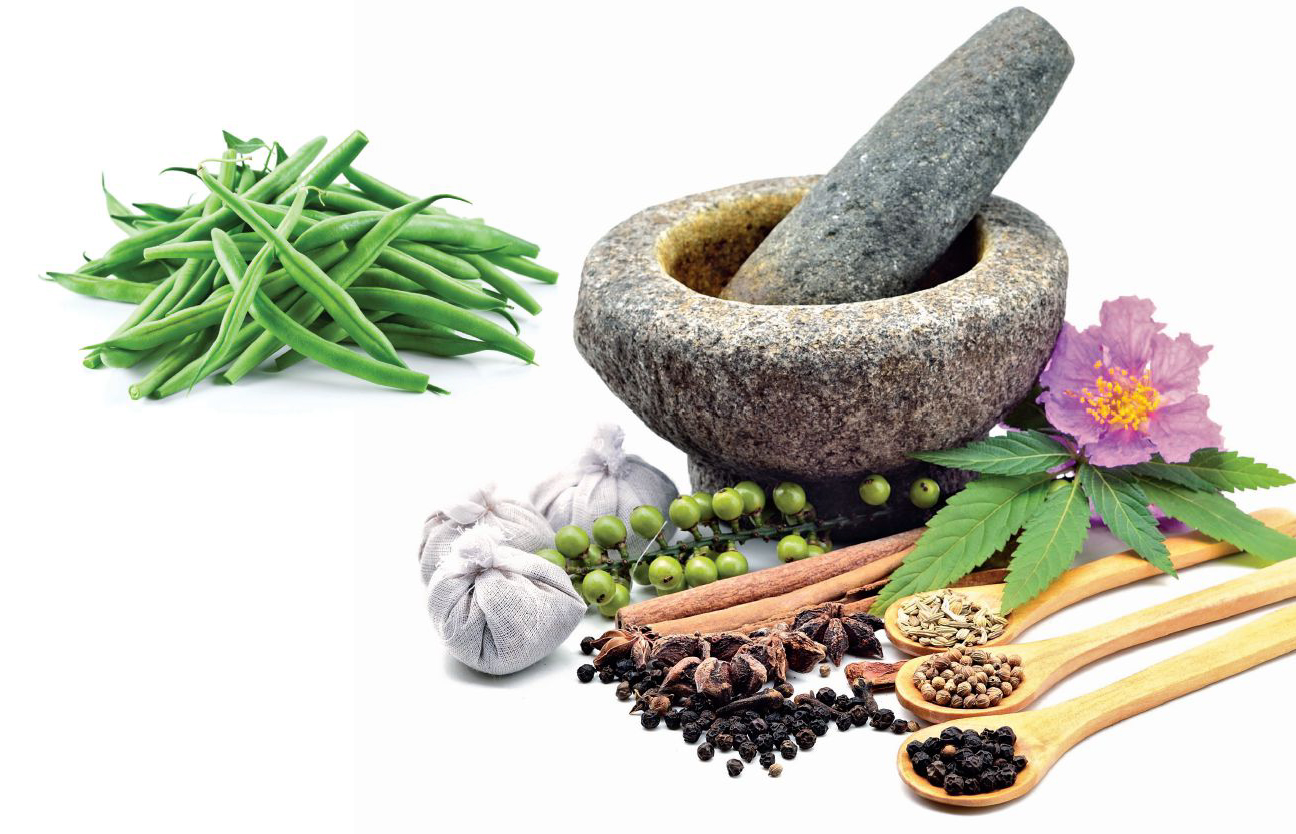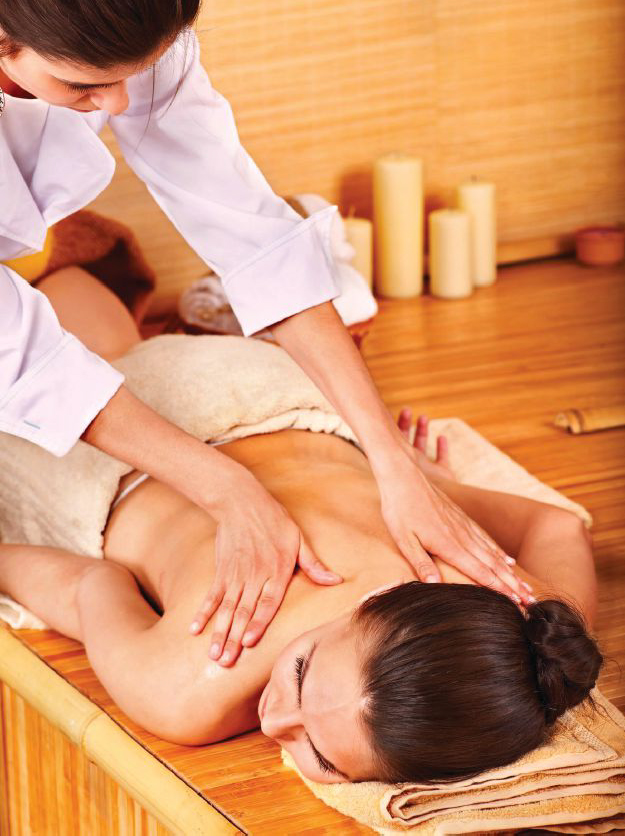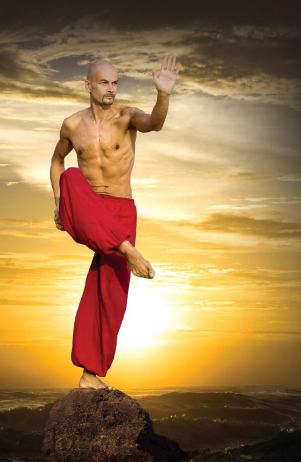“Pain is a serious issue with estimates of over 100 million Americans (one-third of the population) and 1.5 billion people worldwide struggling with chronic pain. In the U.S., chronic pain is the leading cause of adult disability, more so than cancer and heart disease combined. The opioid-based pain reliever Vicodin is the most commonly prescribed drug for chronic pain, and many people have become addicted to this conventional pharmaceutical treatment. In addition to affecting an individual’s health and wellbeing, chronic pain impacts the person’s family, and estimated costs to society in lost work days, medical expenses, and other benefit costs exceed $500 billion annually.”
While acute pain is a natural response to alert you to possible injury and the need to take action, chronic pain is different. Pain is associated with a wide range of injury and disease, and sometimes is the disease itself. For those suffering with chronic pain, there may have been an initial injury to which the body continues to react or an ongoing cause of pain, however, some people experience chronic pain without having had any past injury or evidence of damage to the body. as pain is an indication that something is wrong, one should always take it seriously and consider evaluation by a health practitioner, especially if the pain is intense or prolonged.
Common chronic pain conditions include headache, low back pain, cancer pain, arthritis pain, neurogenic pain (pain resulting from damage to the peripheral nerves or to the central nervous system itself), repetitive stress injuries, and fibromyalgia. chronic pain can be very stressful for both the body and the spirit and requires careful, ongoing attention to be appropriately treated. ayurveda provides a comprehensive system for lifestyle management to reduce inflammation, promote recovery, address the underlying cause of pain, and minimize the deleterious effects of stress. central to ayurvedic practice, mind-body techniques such as meditation, yoga, and Pranayama help to calm and soothe the mind and body and have been shown to modulate the sensitivity to and perception of pain. research has demonstrated the benefit of individual ayurvedic approaches, such as yoga and meditation, as well as an integrative ayurvedic approach in the setting of chronic pain. ayurveda can be especially helpful when other symptoms are present, such as anxiety and insomnia, which require a more holistic approach.
An ayurvedic approach to managing chronic pain encourages a healthy lifestyle in accordance with nature and one’s own constitution (dosha). this includes proper nutrition, physical activity, good emotional health and relationships, and a regular daily routine for health maintenance. lifestyle choices that are well suited for one person may be inappropriate for another. therefore, understanding our unique mind-body type or dosha, and learning how to make choices to re-establish balance is crucial. For example, someone who has a Vata-dosha imbalance with a tendency to fatigue from doing too much may need to pull back from a strenuous exercise regime, while someone with a Kapha-dosha imbalance and a tendency to a more sedentary lifestyle may need to keep up with regular appropriate physical activity. By addressing the whole person, ayurvedic treatment seeks not just to eliminate the symptom of pain but also to determine the root cause of the pain, the factors contributing to its development and perpetuation, and ultimately to restore balance to the whole body-mind-spirit system.
General Ayurvedic principles: five elements, three doshas

The ayurvedic understanding of the body relates to the balance of five natural elements – space, air, fire, water, and earth – with the three doshas (Vata, Pitta, and Kapha) representing combinations of these elements. When lifestyle factors and environmental influences cause an imbalance in the doshas, we are led down the path of ill health unless balance can be restored. common circumstances that can lead to such a disruption include poor diet, inadequate or inappropriate physical activity, lack of quality sleep, overwork, relationship or other emotional stresses, exposure to toxins, and unsuitable climate. in addition to pushing us out of balance, these factors also diminish our physical and mental digestive capacity known as agni. When agni is healthy and balanced, we are able to transform food and experiences into a subtle nourishment for the body and mind known as ojas. However, if agni is weak, digestion is incomplete and toxicity known as ama accumulates, which can block nourishment from coming into the body, creating symptoms such as fatigue and chronic pain. thus, the starting point of ayurvedic treatment is to remove accumulated toxicity from the body, optimize the digestive capacity, and restore balance to the doshas.
Ayurvedic detoxification
Ama is described as a sticky, internal metabolic waste that clogs the channels and depletes tissue nutrition. it accumulates when agni is low and food is not digested properly, when wastes are not effectively eliminated, when emotions are unresolved or repressed, and when doshas are out of balance. When ama is present in the body, we feel fatigued and heavy, digestion can be disrupted, elimination is sluggish or irritable, our mind is unclear, and we may experience pain and depression. a thick coating on the tongue might be evident. if imbalances are long-standing and toxicity has accumulated, ayurvedic cleansing therapies may be needed first to reduce the ama blockages, which prevent the body from returning to health. ama is removed by restoring the digestive fire and by specific techniques to remove stored toxicity.
“The most comprehensive way to address ama is to undergo the traditional Ayurvedic purification process known as Panchakarma. “
the most comprehensive way to address ama is to undergo the traditional ayurvedic purification process known as Panchakarma. this refers to five cleansing actions, each of which reduces a specific excess dosha by removing toxicity from its site of accumulation. the preparation phase of Panchakarma loosens accumulated toxicities and prepares them for elimination by internal and external application of oils and heat. elimination therapies are then administered depending on the doshic disturbance. the main ways that toxins are routinely removed from the body are through sweating, urination, and bowel elimination and these actions are encouraged. the herbal bowel tonic triphala is often used to ensure regular daily bowel movements and may be combined with other herbal remedies. other methods for cleansing toxicities may also be employed as needed. During and after Panchakarma, the digestive fire is diminished necessitating a light diet with easy to digest foods such as khichri (mung dal and rice mix) and then gradually increasing the diet. Post-treatment therapies reinforce healthy digestive and metabolic functioning and strengthen the body through dosha-balancing lifestyle. completion of the process induces the body’s natural healing abilities so that health and balance may be restored. although clinical studies are limited, recipients of Panchakarma report both physical and psychological improvements with reduced stress, improved wellbeing, and relief from a range of health problems including back pain, arthritis, migraine headaches, and fibromyalgia.
Optimizing digestion and nutrition
Agni is restored by realigning with the rhythms of nature through daily routines, and by addressing lifestyle factors that initiated the state of disruption. our digestive fire is affected not only by what we eat but also by how we eat our food. Steps to optimize digestion include eating the right quantities of food, eating only after the previous meal has been digested, eating freshly prepared foods, and reducing incompatible food combinations. eating a lighter diet of easy-to-digest warming foods such as dal, soups and steamed vegetables kindles agni. chewing on a piece of sliced raw ginger sprinkled with lemon and rock salt before eating can improve agni. Warming spices (ginger, black pepper, cinnamon, etc.) or the herbal formula Trikatu (ginger, black pepper, long pepper) can enhance digestion and reduce ama.

Ayurvedic nutrition emphasizes real, whole foods to provide both energy (calories from proteins, fats, and carbohydrates) and information (macronutrients, vitamins, minerals, and phytonutrients). the diet should be individualized according to our own mind-body constitution as well as current state of doshic imbalance. Six tastes (sweet, sour, salty, pungent, bitter, astringent) are recognized and have properties that influence the doshas. By adjusting tastes and other qualities of foods, doshas can be brought back into balance. to balance Vata, for example, eat warm, nourishing, easily digested foods such as soups and stews with omega-3 fatty acids derived from healthy oils and fats, particularly, linoleic acid as found in flaxseed oil. Foods that increase dryness and air in the system and thus aggravate Vata, such as bitter raw leafy greens, astringents (beans, legumes, apples), and dried fruit and nuts should be reduced. eating a dosha-balancing diet can improve digestion and nutrition as well as deliver anti-inflammatory and other therapeutic herbs and foods to enhance overall functioning as well as potentially addressing pain.
Dosha balance
 While the entire picture has to be taken into consideration to develop a proper overall treatment plan, pain can have qualities characteristic of each of the doshas. Vata dosha is usually affected in chronic pain due to its relationship to prana, which governs the nervous system and all sensations. Vata-type pain has qualities of dryness, popping, cracking, cold, and lack of nourishment associated with an excess of the space and air elements. the pain may be mobile, radiating, fluctuating, and vague in nature and can be worse with cold and increased movement. Vata pain may be associated with digestive disturbances such as flatulence, constipation, and bloating. thus, treatment is aimed at bringing balance into the system introducing the opposite qualities of stability, oiliness, lubrication, and nourishment. application of heat; oil massage with sesame oil or ghee (clarified butter); pressure at the site of the pain; and medicated enemas may be used.
While the entire picture has to be taken into consideration to develop a proper overall treatment plan, pain can have qualities characteristic of each of the doshas. Vata dosha is usually affected in chronic pain due to its relationship to prana, which governs the nervous system and all sensations. Vata-type pain has qualities of dryness, popping, cracking, cold, and lack of nourishment associated with an excess of the space and air elements. the pain may be mobile, radiating, fluctuating, and vague in nature and can be worse with cold and increased movement. Vata pain may be associated with digestive disturbances such as flatulence, constipation, and bloating. thus, treatment is aimed at bringing balance into the system introducing the opposite qualities of stability, oiliness, lubrication, and nourishment. application of heat; oil massage with sesame oil or ghee (clarified butter); pressure at the site of the pain; and medicated enemas may be used.
Pitta-type pain has qualities of heat, inflammation, intensity, and swelling associated with an excess of the fire and water elements. the pain may be described as burning, sharp, gripping or excruciating, with tenderness and pain on pressure. the pain may spread to neighboring areas and can be increased with heat and movement. Pitta-type pain relates to inflammation and may also be associated with infection and fever. treatment of Pitta-type pain is aimed at soothing and cooling the system as well as reducing inflammation. cold compresses; oil massage with coconut; sunflower oil or ghee; and herbal purgatives may be helpful.
“Ayurvedic lifestyle and mind-body techniques as part of a healthy daily routine can return the doshas to a state of balance, reduce the effects of stress, and stimulate healing.”
 Kapha-type pain has qualities of stiffness, dullness, swelling, and congestion associated with and excess of the water and earth elements. Kapha-type pain can be localized, deep, dull, and aching and may be aggravated by cold. treatment is aimed at increasing mobility and decreasing swelling and stagnation in the system. Pressure and deep massage, dry brush massage, movement, warming exercise, and dry heat may be helpful.
Kapha-type pain has qualities of stiffness, dullness, swelling, and congestion associated with and excess of the water and earth elements. Kapha-type pain can be localized, deep, dull, and aching and may be aggravated by cold. treatment is aimed at increasing mobility and decreasing swelling and stagnation in the system. Pressure and deep massage, dry brush massage, movement, warming exercise, and dry heat may be helpful.
In addition to addressing the doshic aspects of the pain itself, ayurvedic treatment seeks to restore balance to the doshas overall. Vata out of balance is characterized by too much movement, dryness, and air and can be related to disorders of the nervous system, irritable bowel, constipation, anxiety, insomnia, and chronic pain syndromes. Pitta out of balance is characterized by too much physical and or mental heat and can be related to heartburn, skin rashes, inflammation, and excessive criticism, anger, and hostility. Kapha out of balance is characterized by stagnation and accumulation and can be related to weight gain, edema, development of growths such as cysts and tumors, congestion, sluggishness, apathy, and withdrawal. Ayurvedic lifestyle and mind-body techniques as part of a healthy daily routine can return the doshas to a state of balance, reduce the effects of stress, and stimulate healing.
Daily routine and mind-body practices
Ongoing stress diminishes the ability to cope overall as well as potentially increasing inflammation and the perception of pain. the capacity to manage stress is influenced by genetic factors (dosha) as well as lifestyle patterns including diet, exercise, sleep, and emotional regulation, all of which may be affected by stress. Ayurvedic practices (meditation, yoga, Pranayama) and a healthy dosha-balancing daily routine with proper nutrition, sleep, and physical activity reduce the effects of stress and improve our ability to manage pain.
The ideal daily routine is aligned with the circadian rhythm, which cycles through each of the doshas. For example, sleep should occur from approximately 10 pm and 6 am (although some require more or less sleep), the largest meal should be at mid-day when digestion is at its strongest with the evening meal lighter as digestion has slowed down, and evening activity should be physically and mentally less strenuous to prepare for sleep.
The healing power of meditation
Meditation is a core component of an ayurvedic daily routine and is a part of many spiritual practices. By experiencing inner calm and deep relaxation, meditation reduces the sympathetic fight-or-flight response and counterbalances stress. Meditation reduces inflammation and alters the blood sugar response, both of which may play a role in chronic pain. recent studies have shown that even short meditation interventions positively affect brain mechanisms related to pain and stress. there are many different meditation techniques that can be used to achieve a relaxation response. concentrative practices utilize sounds (mantras), words (prayers), or visual stimuli to help shift attention beyond our thoughts. Mindfulness practices and expressive practices (dance, chanting) bring our awareness to the present moment rather than dwelling in the past or projecting into the future. Whatever the type, the key is to have a regular daily practice.
like meditation, many different schools of yoga exist, with key elements including postures (asanas), breathing exercises (Pranayama), and meditation. the benefits of yoga are likely due to many different known effects such as reduced sympathetic stress response, reduced inflammation, lowered symptoms of anxiety and depression, and improved sleep. Flexibility and fitness also may be improved over time. Several studies have shown yoga to be a helpful modality in treating chronic pain conditions such as low back pain, carpal tunnel syndrome, fibromyalgia, and cancer-related pain.
Pranayama, or yogic breathing exercises, is another technique that can help us shift from a state of stress to a state of calm. alternate nostril breathing and slow diaphragmatic breathing are two relaxing techniques that help us respond to stress in a healthy way. other breathing techniques can be used to balance doshas, improve vitality, and enhance the digestive capacity.
There are many different types of massage and it is well known to help with pain, stress, and sleep. Massage is an integral part of Panchakarma and other ayurvedic therapies as well as part of a healthy daily routine. Different types of massage are suitable for different doshas and can improve circulation and lymphatic flow while assisting in detoxification. Herbal oils applied topically with massage can also help reduce discomfort. Marma therapy can activate certain energy points in the body to balance the doshas and enhance healing. Beyond touch, other sensory modulation techniques can be used to balance the doshas and encourage subtle healing through sound, sight, and aromas.
Herbal remedies

In conjunction with a dosha-balancing program, ayurvedic herbal remedies may be useful in both chronic pain and stress as well as to encourage overall health. Many ayurvedic herbs have anti-inflammatory and immunemodulating effects and work on multiple areas of the physiology. often, poly-herbal formulations are used and a combination including ashwagandha, Boswellia, Ginger and turmeric has been shown in clinical trials to reduce pain in patients with osteoarthritis and to reduce joint swelling and rheumatoid factor levels in patients with rheumatoid arthritis. While some herbs and spices can be taken as foods, others can be used in higher doses to achieve more therapeutic levels. Several commonly used ayurvedic herbs include:

- Boswellia (Boswellia serratia): analgesic, antiinflammatory, and antispasmodic.
- Ginger (Zingiber officinale): antispasmodic, antiinflammatory, digestive, ama-reducing, warming
- turmeric (Curcuma longa): anti-inflammatory, digestive, ama-reducing.
- Guggul (Commiphora mukul): anti-inflammatory, ama reducing, good for arthritic pain.
- ashwagandha (Withania somnifera): adaptogen, anti-inflammatory, calming while energizing, good for neurologic and muscular pain.
Ayurveda provides a comprehensive system for lifestyle management to minimize the influence of stress and promote recovery in chronic pain. By addressing the system as a whole, balance is restored, and factors which contribute to the development and perpetuation of stress and pain, are reduced.
 Dr. Valencia Porter is Director of Integrative Medicine at the Chopra Center for Wellbeing and is board certified in both General Preventive Medicine and Integrative Holistic Medicine. A graduate of USC – Keck School of Medicine, she was the recipient of a Bravewell Collaborative scholarship for the prestigious Fellowship in Integrative Medicine at the University of Arizona, founded by Dr. Andrew Weil. Beyond allopathic medicine, Dr. Porter has received extensive additional training in many complementary healing modalities, including Ayurveda, medical acupuncture, meditation, yoga, Healing Touch, herbal and nutritional supplements, functional medicine, and mind-body medicine – all of which she combines in her medical practice at the Chopra Center. www.chopra.com/perfecthealth
Dr. Valencia Porter is Director of Integrative Medicine at the Chopra Center for Wellbeing and is board certified in both General Preventive Medicine and Integrative Holistic Medicine. A graduate of USC – Keck School of Medicine, she was the recipient of a Bravewell Collaborative scholarship for the prestigious Fellowship in Integrative Medicine at the University of Arizona, founded by Dr. Andrew Weil. Beyond allopathic medicine, Dr. Porter has received extensive additional training in many complementary healing modalities, including Ayurveda, medical acupuncture, meditation, yoga, Healing Touch, herbal and nutritional supplements, functional medicine, and mind-body medicine – all of which she combines in her medical practice at the Chopra Center. www.chopra.com/perfecthealth







